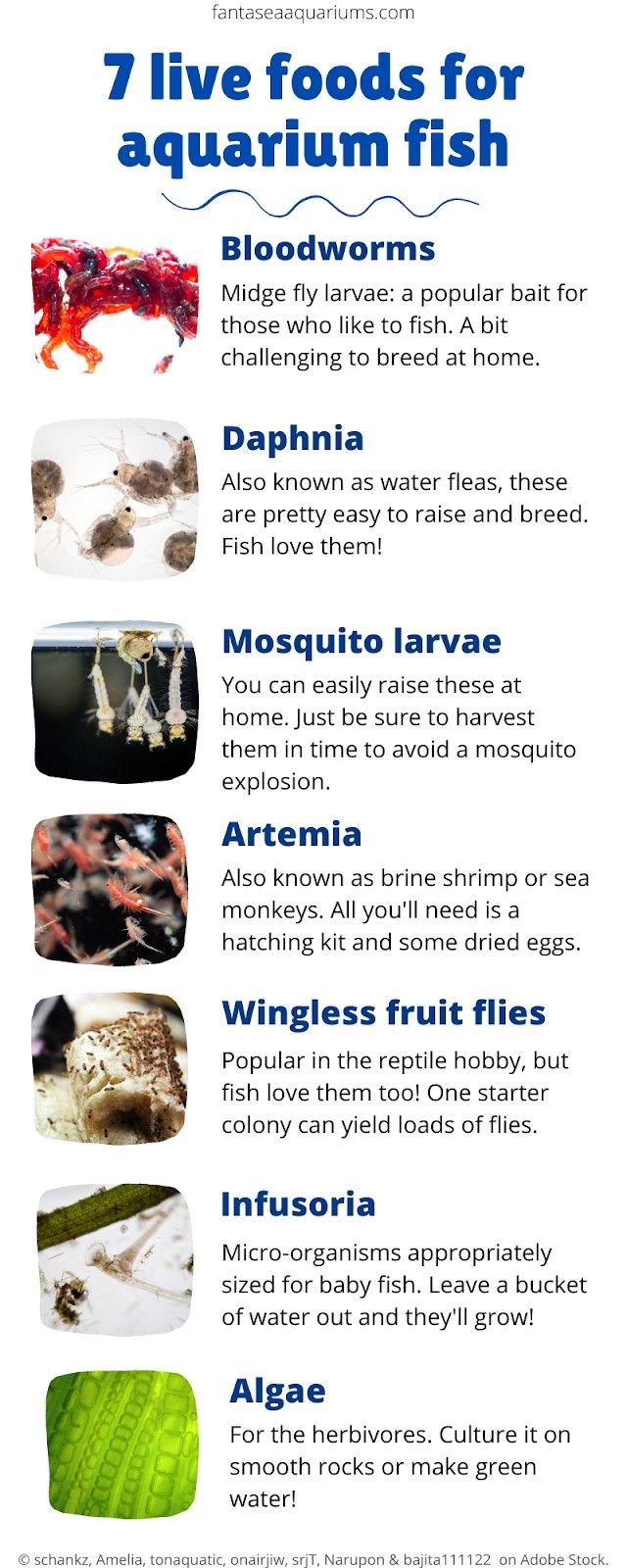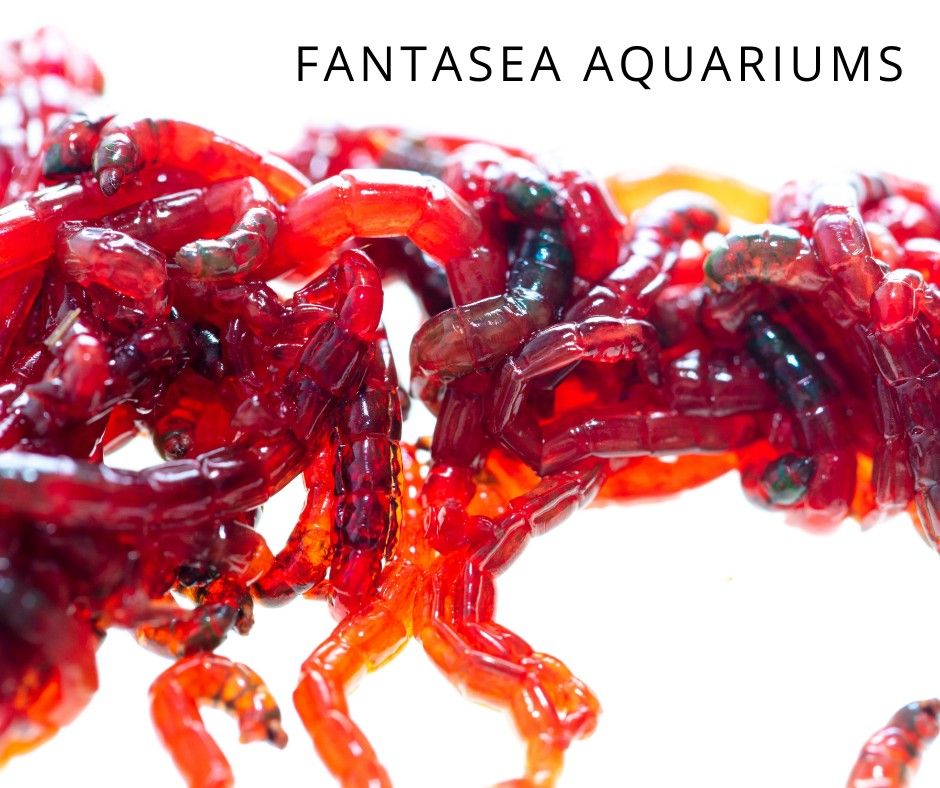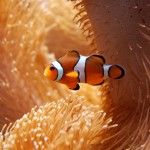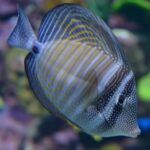Many of our favorite aquarium fish naturally eat small invertebrates like worms and aquatic insects. Although we have lots of fish food options at our disposal, live critters are still the most natural option. Luckily, you can cultivate many species at home!
There are way too many options out there to discuss all of them, but let’s go into a few of the most popular types of live food for aquarium fish out there.

1. Artemia (brine shrimp, Artemia sp.)
Probably the most popular live food for aquarium fish of them all. Many of us know these as ‘Sea Monkeys’ and have hatched brine shrimp eggs when we were kids
The eggs can be revived even after having been dry for a long time; you can pick them up in your aquarium store and hatch them using a brine shrimp hatching kit.
The nice thing about brine shrimp is that they’re suitable for both small and medium sized aquarium fish. Freshly hatched shrimp are very tiny, while mature specimens are 0.3” in size on average.

2. Mosquito larvae
It’s a bit icky, but mosquito larvae are a huge favorite among many of our aquarium fish. These are super easy to breed because all you have to do is fill a tub of water and place it out in the garden. They’ll appear without intervention!
Only catch, of course, is that you have to stay on top of scooping them out daily because otherwise they’ll have the time to grow into adults. Last thing you want is to trigger a mosquito plague in your own garden.

Wingless fruit flies (Drosophila melanogaster)
Pet stores with a reptile section will often have wingless fruit fly colonies in stock. This is honestly such a great live food option: one colony can keep yielding flies for a long time, they don’t need a lot of space at all and because they don’t have wings, there’s no risk of them ending up everywhere.
Fruit fly colonies are usually shipped in a container that has everything they need in terms of food. All you have to do is catch a few and feed them to your fish.

Infusoria
Infusoria are microorganisms, the kind that form that slimy layer you can feel on objects in your aquarium. You can cultivate this slime in order to feed baby fish or shrimp that are too small to take much else!
You might even have done this when you were little as well: all you do is drop some yeast or a handful of grass into a container filled with water and put it out in the sun to make a nice slimy soup.
When we were little, we’d take this and look at this under a microscope to see all the infusoria zooming around. Now, we can feed our small fish by releasing infusoria water near them with a pipette.

Algae
You can easily grow this for your herbivorous fish if it turns out your aquarium is too clean to sustain their needs.
Cultivating a nice layer of this green goodness is pretty easy. Take some rounded aquarium stones, place them in a bucket of water and hang an aquarium light above it. Leave the light on for most of the day and you’ll soon see the algae start to appear.
You can also cultivate green water, which gets its color from free-floating algae. Getting a starter culture can help, but you can also DIY it by placing a bucket of water and some grass clippings outside in the sun.

Bloodworms (family Chironomidae)
If you like to fish you’re probably familiar with these. Bloodworms are bright red, segmented worms that fish are really attracted to, which is why they’re often used as bait.
These worms can be a bit of a challenge to breed, since they’re the larvae of midge flies (which resemble mosquitoes but don’t bite). Luckily, there are reputable sources out there that sell bloodworms, so your fish can still enjoy them.

Daphnia (water fleas, Daphnia sp.)
Take a large, shallow food-safe storage container and fill it with some aquatic plants and an air stone. Add a daphnia starter culture, which can be bought online or from other hobbyists, and you’re good to go!
All these critters need is clean water and a diet of activated yeast. Some aquarists do also swear by providing their daphnia colony with green water, which we described in the section on algae.

Conclusion
There are many types of live food for aquarium fish out there, many of which you can hatch or culture at home. A great way to add variety and offer enrichment!
Are you dreaming of your own aquarium? FantaSEA Aquariums can help. We design, build and maintain aquariums, so all you have to do is enjoy your tank. Contact us now!




